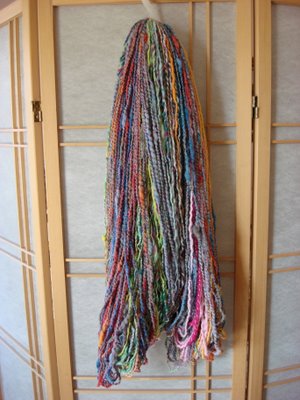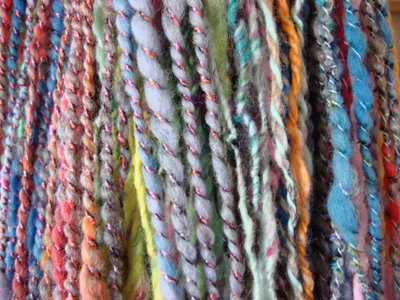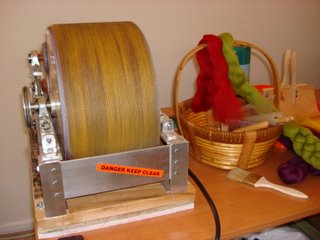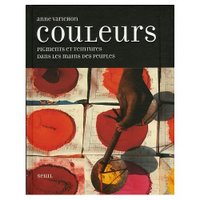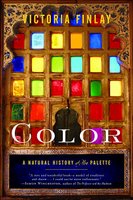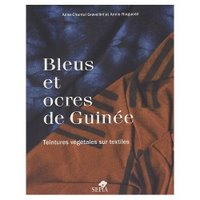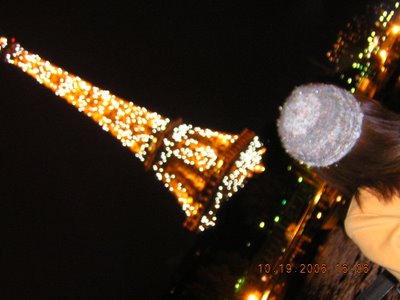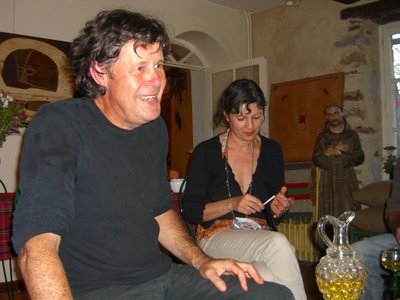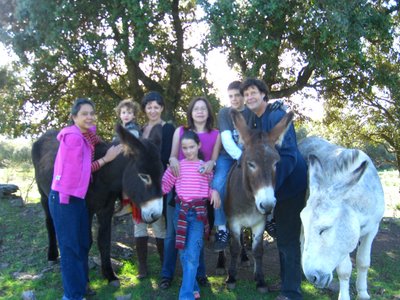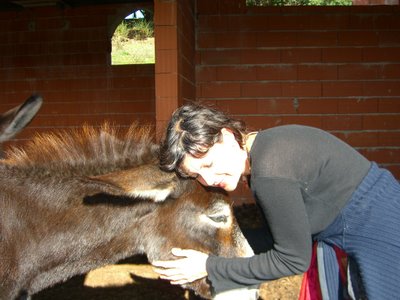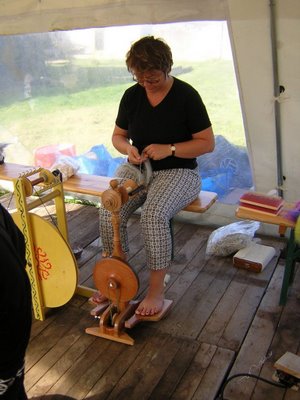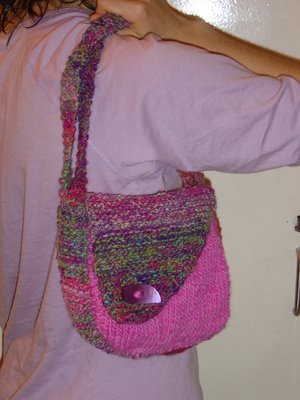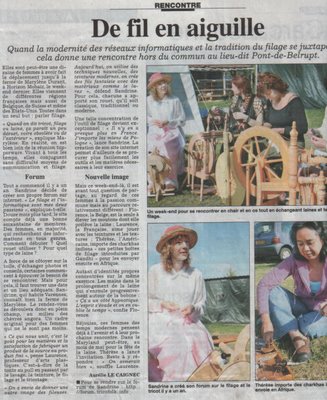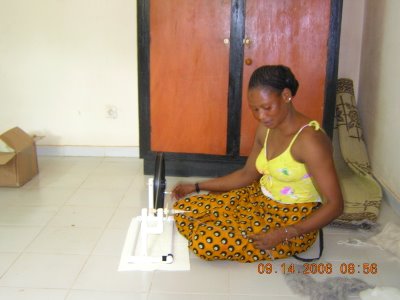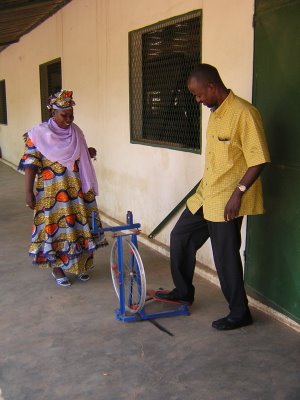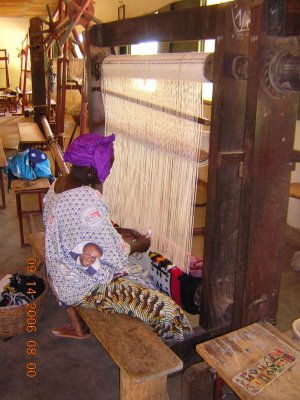The organizers: Sandrine and Richard. Sandrine owns the francophone spinning forum,
Tricofolk, and an online knitting and spinning boutique,
Alysse Créations. Richard sells corsetmaking supplies on the same website. He also makes them to order, or will sell patterns. For fans of Sophia Coppola's Marie Antoinette, this is your chance to create your own. Really cool with jeans.


The angora goat farmers and generous hosts of the retreat: Marylene (wearing glasses) and Alain. Marylene takes care of the goats, unless she's on the road selling the mohair products of an angora goat cooperative under the label,
Horizon Mohair. When she's away, Alain takes over. They have a large room that functions as an fiber processing museum with old picking and carding equipment for young kids and their parents to learn about a mostly forgotten trade, that of spinning.


All of the spinners drove in, four of them with their pack mules, I mean, husbands. I flew in to Paris on frequent flyer miles and took the three-hour train ride to the farm.

The aspiring spinners: Garance and Amelie. Garance is the daughter of Laurence, a.k.a.
Laine Zinzin. Garance learned to spin during the spinners' weekend for the first time because her Apple computer was back at home. Her mom says she's a whiz with PhotoShop. Amelie's mom, Florence (a.k.a. Pouxy because there is another Tricofolk spinner with the same name), is into chiengora and persian cats, which sells under the label,
Canilaine. I was pleased that both teens went for my rovings in tresses which I had brought along for the supply swap (we also exchanged handspuns in a raffle). The fiber was dyed with pigments from Morocco and they couldn't resist the bright colors.

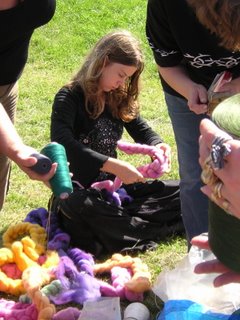

The inspiration: Pluckyfluff. Just as in Majacraft's Spinning Magic Weekend, Lexi Boeger's book, Spinning Revolution, was inevitably present. There were two copies being passed around. Since the technical aspect was difficult to understand for most of the spinners, Laurence translated for them.
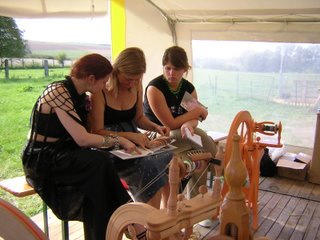
The new fascination:
The Little Gem2. That is
Muriel on my foldable little wheel. As with all Majacraft products, the spinner controls the wheel, not the other way around. Moreover, you never need to oil to get it to operate smoothly. There were eight European spinners who came and at the end of the retreat, we were calling Majacraft in Tauranga, NZ, for Little Gems for two spinners. I'm proud to sell the Little Gem -- see the Fall issue of Spin-Off magazine. Spinners in France, Belgium and Switzerland may now order them from Sandrine at
Alysse Créations

Finally, Laurence and me test-driving the
charkhas for Africa and, at the same time, posing for the journalist of
Est Republicain who came to cover the event.
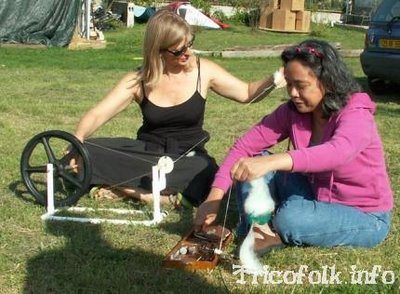
For spinners in the US and Canada interested in the next francophone retreat, it will be in June 2007 in
the Cévennes region of France. It is being organized by
Joelle (unfortunately too far to make it to Lorraine this year). Cévennes is lovely and provides hiking opportunities for pack mules. Laurence, who has a farmhouse in the region and spends the summer there, is also promoting it.
Next blog: The Spinners of Mali.
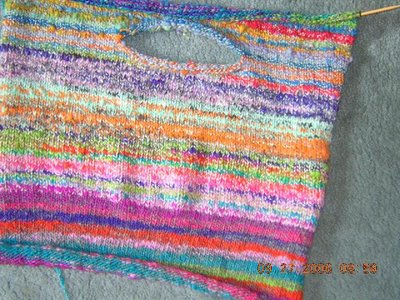 I didn't want to be limited to hats and mitts, so I attempted to knit a sweater with a dozen small skeins, inspired by this photo below.
I didn't want to be limited to hats and mitts, so I attempted to knit a sweater with a dozen small skeins, inspired by this photo below.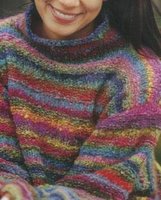 The knitted up fabric looked great. However, because I used US size 8 needles, the result was too stiff to be comfy as a sweater. In fact, it was more suitable for a placemat. The project is now frogged and I've swatched with a US size 11 and it's now just fine!
The knitted up fabric looked great. However, because I used US size 8 needles, the result was too stiff to be comfy as a sweater. In fact, it was more suitable for a placemat. The project is now frogged and I've swatched with a US size 11 and it's now just fine!